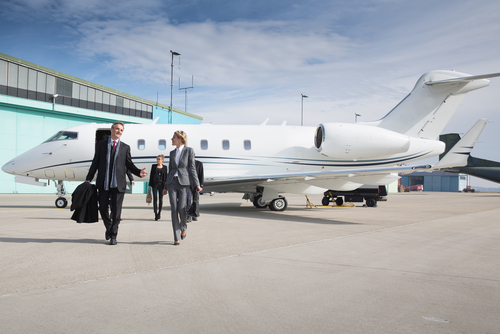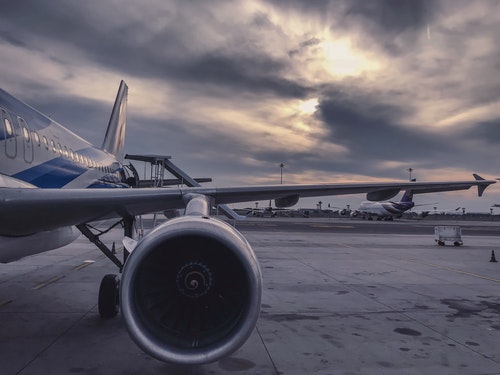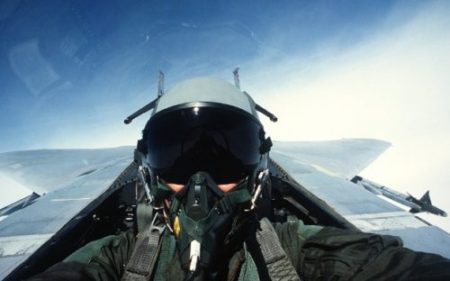Private Jets Key Points:
- The U.S. is seeing a 40% increase in business jet take-offs and landings.
- Jefferies Equity Research data shows that, as IPO activity increased, business jet deliveries increased in association with it in 2021.
- The inventory of used jets has fallen to record levels, with most major jet manufacturers reporting a level of around 3% or less.
Private jets demand is so high that companies cannot produce them fast enough, and buyers have to wait longer for their deliveries. Even secondhand business jets disappear from the marketplace.
According to John Schmidt, Accenture’s global leader in the defense and aerospace industries, the market had almost exploded if you compare it to 2019. He spoke to CNBC at the Dubai Air Show.
Many people are now flying private, some for the first time after the pandemic. Analysts believe the trend can be attributed to the wealth boom over the past year and a quarter, particularly at the top echelons. In addition, as more companies go public, the stock exchange reaches record heights, and spenders enjoy a prolonged period of low-interest rates.
According to Morgan Stanley, business jet take-offs are up 40% annually and at their highest level since the 2008 financial crisis. In the United States, public listings of companies have reached record levels in 2021. In addition, Jefferies Equity Research data shows that business jet deliveries increased in correlation to IPO activity.
Individual buyers are also looking for more reliable and safer travel than commercial flying. New and used aircraft prices have been at their highest level in many years despite rising inflation and increased demand in the high-end sector.
Jefferies reports that inventory of used jets is at an all-time low, with around or less than 3 percent for most prominent manufacturers, including Dassault, Cessna, Bombardier, Gulfstream, and Embraer, Jefferies says.
Schmidt stated that private flight activity has increased in the U.S. and is 20% higher in Europe. He said that inventories are at their lowest level in years, and prices are up to 20%-30%. “Things have been tight in used business aircraft. It’s a very hot market right now.

New Clients
According to a Goldman Sachs report, 30% of private jet buyers are first-time buyers. Stephen Friedrich, Embraer Chief Commercial Officer, sees the rise in the consumer base as what is most striking.
“The market for business jets is expanding,” Friedrich stated that the pie has grown. “And this is because of continued wealth creation exceeding 12% if you look at billionaires around the world, as well as what was previously Fortune 100 and large private businesses.”
He said that people are seeking ways to be more productive and more confident in the missions they have to complete. Business aviation is a “productivity tool.”
“Can you fly directly from New York City to Muscle Shoals (Alabama) on a commercial flight?” No,” Friedrich said. However, journeys that would typically take more than a day to travel can be reduced to just a few hours for those who have the money to buy a business jet.
credit: Embraer
Business jet cabin pressure is significantly lower than commercial aircraft’s — some say it’s even less than half. This difference makes it easier to meet multiple people in different cities and feels less tired upon landing. Embraer’s Praetor 600, Embraer’s flagship plane, has a cabin elevation of 5,800 feet and Dassault Falcon 6X at 3,900 feet. This compares to commercial jets with an average cabin altitude of 8,000 feet.
credit: Dassault Falcon
VistaJet, a private jet charter company, reported a 29% rise in members over the last year. In addition, 71% of all new requests came from passengers who had never used private aviation before.
It was also discovered that 53% of the new private aviation users, or more than half, will continue flying privately after the pandemic.
According to the Institute for Policy Studies, wealth creation has been extremely uneven since the pandemic. U.S. billionaires have gotten 62% richer since March 2020. They have accumulated more than $1.8 trillion since then.
Sustainability Challenges
Private jets were a common sight at the COP26 Climate Summit in November. Environmental activists criticized this, claiming that 1% of air passengers are responsible for half of the industry’s carbon emissions.
Transport & Environment, a European campaign group, found that private planes pollute 5-14 times more per passenger than commercial aircraft. Furthermore, a single private aircraft can produce two tons of carbon dioxide in an hour. The study also showed that private jets’ CO2 emissions in Europe increased by 31% between 2005-2019, surpassing commercial jets.
According to industry executives, sustainability has become a top priority for their companies. Embraer pledged to achieve net-zero carbon emissions in 2040. VistaJet, a charter business jet provider, aims for the same goal by 2050.
Some carriers have begun to use sustainable aviation fuels (or SAF), which produce 80% less CO2 over their entire life cycles than fossil fuels. However, the pace of pickup has been slow.
According to Accenture’s Schmidt: “Sustainable aviation fuels are difficult and expensive to obtain.” However, there are more than 20 places worldwide where they can be found. In November, NetJets celebrated one year of using SAF and had flown 2.5 million nautical miles on the cleaner fuel.
Schmidt stated that (SAF) is the next step in the sustainability of business aviation. He then referred to new programs, engines, and the continuation of technologies to drive sustainable development.
According to the International Air Transport Association, there are 3.7 billion gallons of SAF in forwarding buy agreements. In 2021, 26 million gallons will be produced of SAF. Forty-five airlines have used the fuels. Since 2016, more than 370,000 flights have been made with SAF.
Friedrich, Embraer’s CEO, said that they found it beneficial for a business to ensure a sustainable product. It’s not only the right thing to be doing, but it’s also good business. It’s the right thing for the company.
It will be interesting to see if companies keep their promises. However, industry analysts believe that private flying will continue to rise, so any significant reduction in its damage is unlikely to occur in the near future.
Analysis: The booming private jet market is a boon for rich buyers.
The pandemic has seen private jets demand boom as the wealthy take control of their travel. However, the runway for luxury flights could be limited as some buyers cannot afford the cost. This sector is also a target for climate critics.
Last week, at the National Business Aviation Association (NBAA), Las Vegas, bidding wars for secondhand planes and premiums to receive new ones early were the main topics of conversation.
This is a boon to publicly traded corporate aircraft makers who are selling more planes without the prevalent discounts after the 2008-2009 financial crisis.
General Dynamics Corp’s (GD.N. Gulfstream Aerospace), Bombardier (BBDb.TO), Textron(TXT.N), and Dassault Aviation are the leaders in terms of the value of deliveries. Honeywell (HON.O) values them at $238 billion over ten years.
Stephen Hofer, President of Aerlex Law Group, which deals in aircraft transactions, said, “I hear from people every day that are interested in getting into private airplanes.”
The influx of wealthy families and individuals who purchased first-class tickets on airline flights during the pandemic brings new risks.
A veteran broker spoke of a buyer who purchased a plane at a price he couldn’t afford but leased it for part of the time to travelers. The broker, who spoke openly under anonymity, said that if the demand for leasing drops, the buyer might have trouble paying for the jet.
The broker said that these people had never received a $1,000,000 maintenance bill before and added that such practices were similar to market activity before the 2008 crash.
According to WingX, the U.S. business aviation flight hours increased 16% in October compared to October 2019. This is still the strongest month of activity since 2008.
Many executives, brokers, lawyers, and aviation attorneys are optimistic that the rebound will continue through 2022.
Richard Koe, WingX’s Managing Director, stated that the activity rebound in 2021 “is increasingly being considered as a green signal for faster industry growth over the next few years rather than a one-off bounce after the pandemic.”
Budgeting For Carbon
Analyst Brian Foley stated that deliveries are expected to increase from 700 per year now to approximately 900 by 2025. However, there is still room for growth given the peak of 1,300 planes delivered to customers in 2008.
Supply-chain capacity will limit production of business jets, said Don Dwyer (co-managing partner at Guardian Jet).
Unknown quantity: The amount of business-related travel is expected to take longer than leisure trips to recover domestic U.S. air traffic.
Vinayak Hegde (President of Wheels Up) said that he is now seeing more senior executives travel for business.
Some companies are rethinking travel and creating “carbon budgets” for reducing pollution. This would impact airlines’ business and corporate jets, which produce more carbon per passenger. It is also fighting to defend its environmental record. The industry was recently in the news after Prince Harry and Meghan Markle were criticized for using private jets despite their climate change stance.
The industry’s investors want the problem addressed.
Directional Aviation Capital’s principal Kenneth Ricci warned that corporate aviation should take steps to improve the environment. Otherwise, it could be used against the industry.
Ricci said that sustainability was his biggest concern and the one he’s watching the most at the moment. Ricci spoke to a luncheon audience at the NBAA show. “We must be vocally in front of this.”
Last week, airlines followed business jet companies in committing to net-zero carbon emissions by 2050. However, environmental campaigners claim that the promises don’t go far enough.
Jo Dardenne (aviation manager at Transport & Environment in Brussels) said that “business aviation is at a crossroads.”
“If the sector wishes to achieve zero emissions, it should accept government mandates to use clean technologies and tax wealthy private jets users to fund their deployment.”



